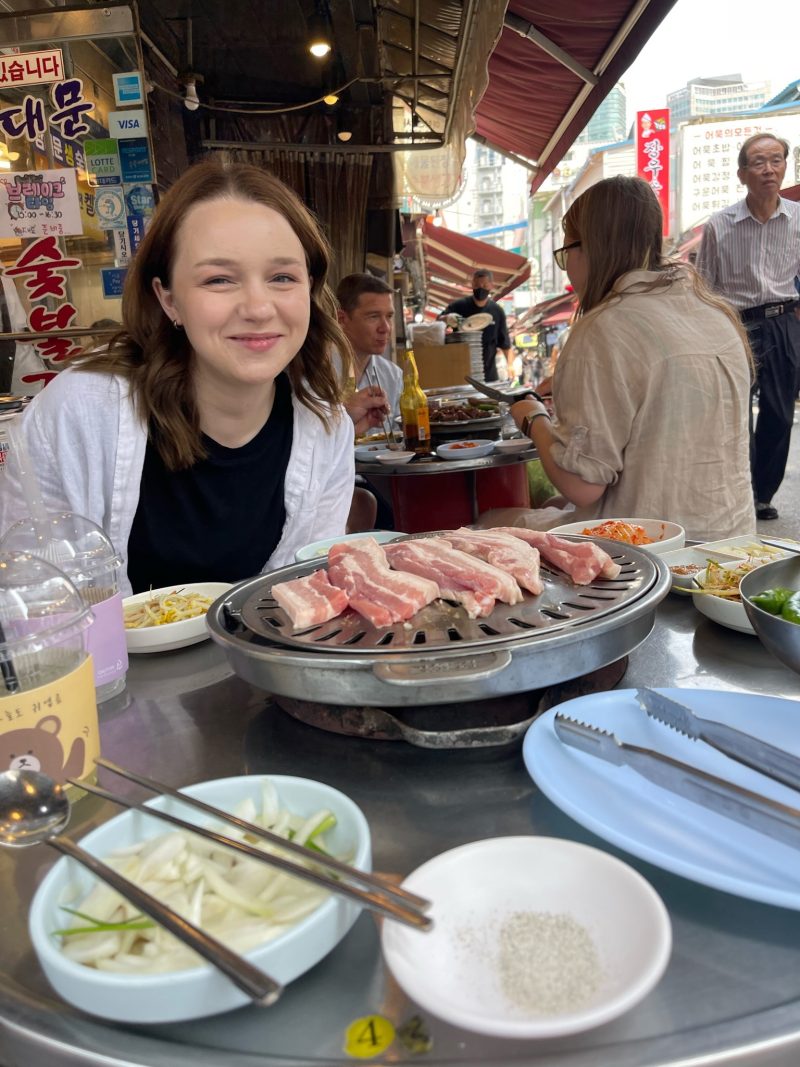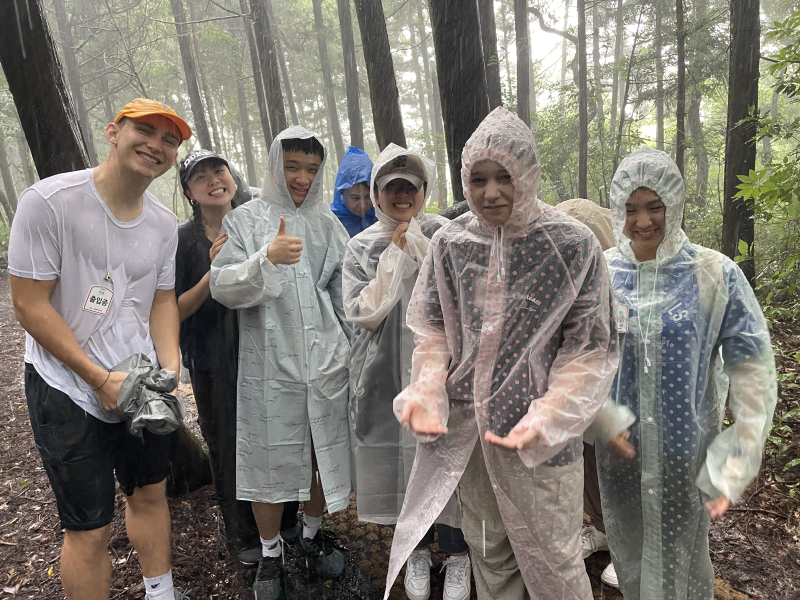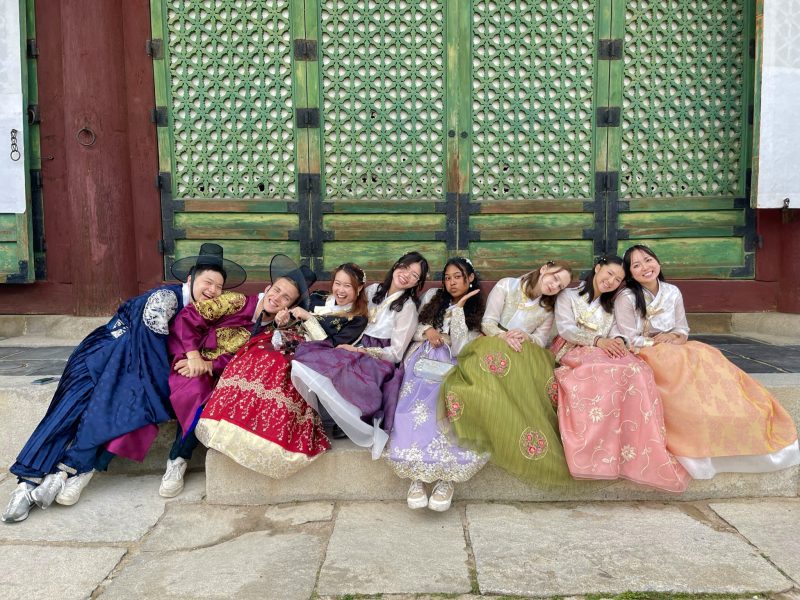For our excursion into Korea’s past, I decided to go to the War Memorial of Korea in Yongsan-dong. Upon arrival, my eyes were immediately drawn to the colossal green and yellow pillar that towered over statues of soldiers as if it were a powerful magnet. Chronicling the history of the Korean War, the museum uses multimedia exhibits and black-and-white documentary footage, together with artifacts including weapons, uniforms, and maps. One of the most memorable things I saw was a letter engraved on the wall from a student soldier to their mother. As I saw many of the other museum-goers stop and read the letter, I stood there in confusion, only able to pick out a few words and phrases. Without an English transcription, I couldn’t help but think of the limitations of museums and how much information actually gets lost in translation. I felt like a first-hand account of the war, such as this letter, would be one of the most important artifacts to translate. This made me reflect on the fact that although archival material has been uncovered, some voices are still diminished and even completely silenced. Stepping into the National Memorial Hall felt like a really special and privileged moment. Paying tribute to all of the patriots involved in past war battles, it displays a conscientious collection of sculptures, reliefs, and wall paintings.

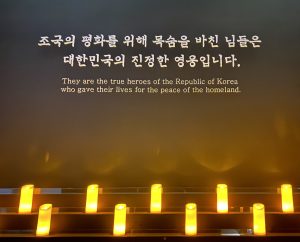
A spirit of overcoming hardships and working towards the unity, prosperity, and eternity of the nation filled the concave walls, as the following words, “The noble sacrifice of heroes became the eternal light that protects the Republic of Korea. They are the true heroes of the Republic of Korea who gave their lives for the peace of the homeland,” written above a row of lit candles at the entrance, stayed with me throughout the entire visit. Although I felt overwhelmed by all of the information presented at the museum, I think that visiting the War Memorial of Korea made the blurry image I drafted of the Korean War, in part from reading some of Bruce Cummings’ The Korean War: A History, that much clearer. Echoing several of the conversations we’ve had about the Korean War still being ongoing, the museum also regards the Korean War as an unfinished and unforgettable war, as North Korea continues to hold “onto its strategy of communizing the entire Korean Peninsula.” The museum frames North Korea as a relentlessly cruel and brutal regime which I can’t help but think contributes to the seemingly never-ending tension between North Korea and South Korea and their citizens. Ultimately, I think that regardless of its scale, duration, actors, and implications, war is always saturated with tragedy. For young adults like me, who may have not experienced war and thus feel detached from the terror of war, this museum shed light on how the Korean War left its people with indelible sufferings and pain. After walking through its elaborate exhibits, I thought that the War Memorial of Korea was not only significant as a commemorative place for soldiers, but also as an informative place of tragic memories for future reconciliation in the Korean Peninsula.
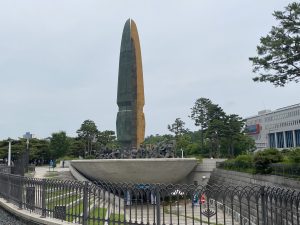
~ Riana Coffman

